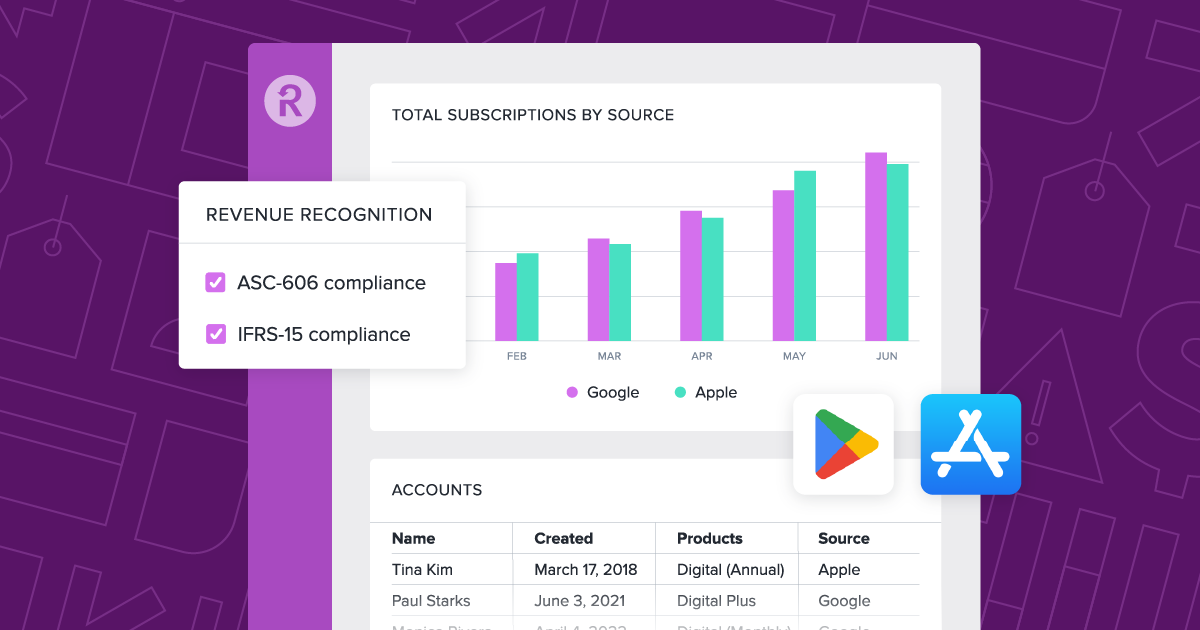Most businesses lack cross-platform subscription analytics–here’s why you need it

Increasingly, consumers are signing up for subscription products and services through app stores hosted by Apple and Google. In fact, over 50% of subscriptions were initiated through merchants’ apps hosted on either the Apple App Store or Google Play last year. While we all love seeing continued growth for subscription offerings, the rise in mobile app-initiated signups creates a real challenge for merchants. With subscription data coming from multiple sources, it’s hard to get standardized metrics on how subscriptions perform across platforms.
How can merchants gain a cohesive cross-platform view of their web and app store subscriptions and subscribers? Unfortunately, the app stores don’t make it easy.
Cross-platform subscription analytics are hard to get
There is a growing demand for subscription analytics that parallels the growth of the subscription industry. Merchants need subscription analytics to identify trends and patterns in customer behavior, enabling them to make data-driven decisions that optimize their subscription offerings and customer experiences. There is even analytics to back up the benefit of subscription analytics—companies that use subscription analytics are able to increase customer retention rates by up to 60%. The problem is that a consolidated view of subscription analytics can be exceedingly difficult to get.
Here’s the problem
The challenge stems from the fact that subscription data comes from multiple sources—as subscribers sign up over the web or within your mobile app hosted on one or the other (or both) of the app stores. Three sources equal three disparate, unique data sources don’t magically blend together and provide the digestible subscription analytics merchants are clamoring for.
To further complicate things—it’s not just web versus app store data. It’s web versus Apple versus Google data. Three different formats that don’t speak the same language. Sure, many merchants can (and do) solve this problem. But the solutions are resource-zapping to build and time-consuming to maintain.
It's just not normal
In order to make use of app store subscription and subscriber data, it first must be normalized. Normalizing data is organizing it, standardizing it, and establishing relationships between various elements—essentially translating it into a common “language.” We hear merchants spend too much time and significant development resources on this normalization step. Some use spreadsheets, while others have created or conscripted applications to perform the task. And it’s not just a one-and-done process—the app stores have a reputation for shaking things up, and each of those shake-ups requires disruptive application tweaks and adjustments.
Reliable, comprehensive subscription analytics are nearly impossible to obtain without this normalization step. Sure, Apple App Store and Google Play both provide you with analytics, but they can only be consumed in a vacuum rather than joined into a cross-platform, comprehensive single source of truth. As a result, merchants are left with three buckets of data that can’t readily be combined, compared, contrasted, and studied. The result is blind spots—data left out of the equation. Data that doesn’t get considered in your business growth and subscriber acquisition strategies.
A solution in the works
At Recurly, we understand how essential subscription metrics are to our merchants. And with an increasing proportion of subscriptions initiated through app stores, we knew we had to make some advancements to our platform that captures and standardizes the metrics surrounding those subscriptions. We’ve done it, and are excited to share with you a new capability soon. It’s going to provide our merchants with a single source of truth across web and app store subscriptions, and more. Stay tuned for updates and full details.
Sources
Grandview Research
PYMNTS.com


